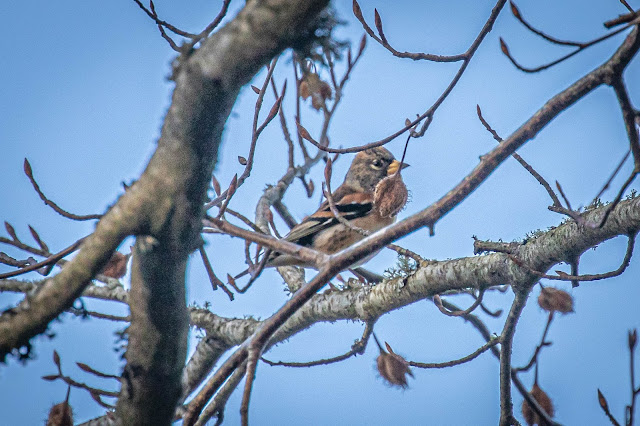With only 6hrs 44 minutes of daylight up here at this time of year when the sun finally shines after a few dreich and dreary days, it's time to make haste.
 |
| Fetternear Bishop's Palace is an archaeological site of what was one of the palaces (or residence) of the medieval bishops of Aberdeen |
 |
| A couple of Brambling along the paths today. |
There are some good feeding stations based in the gardens of the few residential properties around the estate and these are always worth spending extra time scrutinising, thankfully I'm fortunate to know the residents!
 |
| Tree Sparrow ~ A species I'm happy to report are plentiful around the area. |
A colony of Tree Sparrows are always a pleasure to watch and while overlooking one feeding station a couple of Great Spotted Woodpeckers were busy hammering in the trees above. Brambling, Siskin, Lesser Redpoll, Chaffinch, Greenfinch, Yellowhammer, Coal Tit and Treecreeper all noted, along with a flyover Common Buzzard.
 |
| Bullfinch ~ A species that seems to thrive locally |
Several Bullfinch were busy along some of the ditches adjacent to the footpaths and like most of my travels around Aberdeenshire, there are always Roe Deer on the move.
 |
| Two of five Roe Deer enjoying the sunshine |
An enjoyable walk overall with Jays busy looking for acorns under the small numbers of Oaks we have here, and of course plenty of Pink-footed Geese passing noisily overhead.
 |
| Redwings enjoying the holly ~ Taken from the kitchen window! |
Just a few Fieldfare and Redwing were seen today as it's apparent that there all currently in the village enjoying the bounty of berries around the gardens! I was saving these for the Waxwings 😉












































